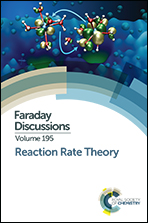Blip-summed quantum–classical path integral with cumulative quantum memory
Abstract
The quantum-classical path integral (QCPI) offers a rigorous methodology for simulating quantum mechanical processes in condensed-phase environments treated in full atomistic detail. This paper describes the implementation of QCPI on system–bath models, which are frequently employed in studying the dynamics of reactive processes. The QCPI methodology incorporates all effects associated with stimulated phonon absorption and emission as its crudest limit, thus can (in some regimes) converge faster than influence functional-based path integral methods specifically designed for system–bath Hamiltonians. It is shown that the QCPI phase arising from a harmonic bath can be summed analytically with respect to the discrete bath degrees of freedom and expressed in terms of precomputed influence functional coefficients, avoiding the explicit enumeration of forced oscillator trajectories, whose number grows exponentially with the length of quantum memory. Further, adoption of the blip decomposition (which classifies the system paths based on the time length over which their forward and backward components are not identical) and a cumulative treatment of the QCPI phase between blips allows elimination of the majority of system paths, leading to a dramatic increase in efficiency. The generalization of these acceleration techniques to anharmonic environments is discussed.
- This article is part of the themed collection: Reaction Rate Theory

 Please wait while we load your content...
Please wait while we load your content...